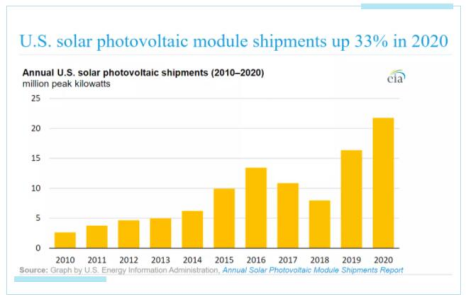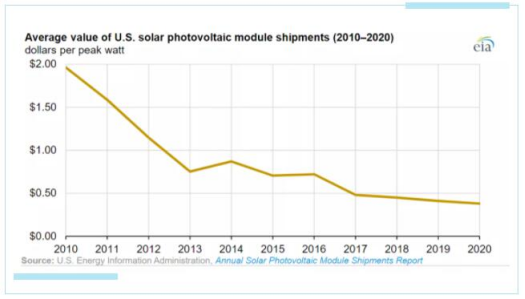Despite the COVID-19 pandemic, U.S. shipments of solar modules reached 21.80 peak gigawatts in 2020, 5.4 GW more than 2019. Among them, 19.30 GW of modules were imported, accounting for 89% of the total shipments, according to statistics from U.S Energy Information Administration. Vietnam is the main importer of the United States, followed by Malaysia, South Korea and Thailand.

The demand for residential solar installations in the US increased in 2020, partly because people spent more time at home during the pandemic. The impending decline in solar tax credits, the continued growth of utility-scale solar power generation capacity, and the decline in solar system costs have all contributed to the increase in shipments.
From 2019 to 2020, the US solar PV power generation capacity has increased by 25%. Utility-scale solar power generation capacity has increased by 29%, and small-scale solar power generation capacity has increased by 19%.
According to the original plan, the federal solar investment tax credit (ITC) will be reduced from 26% to 22% by the end of 2020. Part of the increase in solar power generation capacity in 2020 is due to projects that were installed before the expected ITC decline. However, in December 2020, Congress passed the ITC extension to provide a 26% tax credit for solar systems installed from 2020 to 2022 and a 22% tax credit for systems installed in 2023.
Although the supply chain of modules has been interrupted several times in 2020, the cost of modules has fallen sharply since 2010, which has promoted the growth of solar module shipments.
The average value of module shipments dropped from US$1.96 per peak watt in 2010 to US$0.38 per peak watt in 2020. Reduced supply chain costs and oversupply of modules due to increased production are the main reasons for the decline in the average value of U.S. module shipments in the past 10 years.



